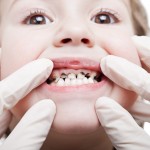
Early childhood caries (ECC) remains an important clinical challenge so a range of preventive approaches have been used. The aims of this study were to investigate the efficacy of home visits (HV) compared with telephone contacts (TC) and no contact (NC) in reducing ECC , Mutans streptococcus (MS) levels and lactobacilli(LB) colonisation in children from a low socio-economic area.
Mothers were randomly assigned to HV or TC although because of ethical requirements, they were given the opportunity to belong to either group (Zelen’s design) 91% remained in assigned groups.
The HV was approx 30mins duration and took place at the of 6, 12 and 18 months. The TC group were contacted at similar ages. At the 24-month visit, all the mothers and children in both groups attended the community dental clinic where they were examined. A reference control group of children, approximately 24 months of age, was recruited from day care centres in the same district. The main outcomes measures were caries MS and LB counts.
They found
- 246 children (75%) completed the three HV or TC interventions with 40 children being recruited for the NC control.
- There were significantly more children with MS in the TC group compared with the HV (P = 0.01) but no difference between the HV and RC (P = 0.46) and TC and RC (P = 0.30).
- For the presence of caries both the HV and TC interventions were found to be significant (P < 0.001 for HV versus RC; P = 0.05 for HV versus TC and P =0.03 for TC versus RC)
[table id=24 /]
The authors concluded
both HVs and TC conducted 6 monthly from birth are effective in reducing ECC prevalence compared to RC by 24 months. HVs are also associated with fewer children with MS compared with TC and RC at 24 months.
Plonka KA, Pukallus ML, Barnett A, Holcombe TF, Walsh LJ, Seow WK. A controlled, longitudinal study of home visits compared to telephone contacts to prevent early childhood caries. Int J Paediatr Dent. 2012 Jan 18. doi:10.1111/j.1365-263X.2011.01219.x. [Epub ahead of print] PubMed PMID: 22251427.
Comment
While the results from this trial are promising the dropout rates from the HV are over just over 20% in the HV arm and 34.8% in the telephone contact arm. Although, these rates were anticipated and the study powered to take this into account.
